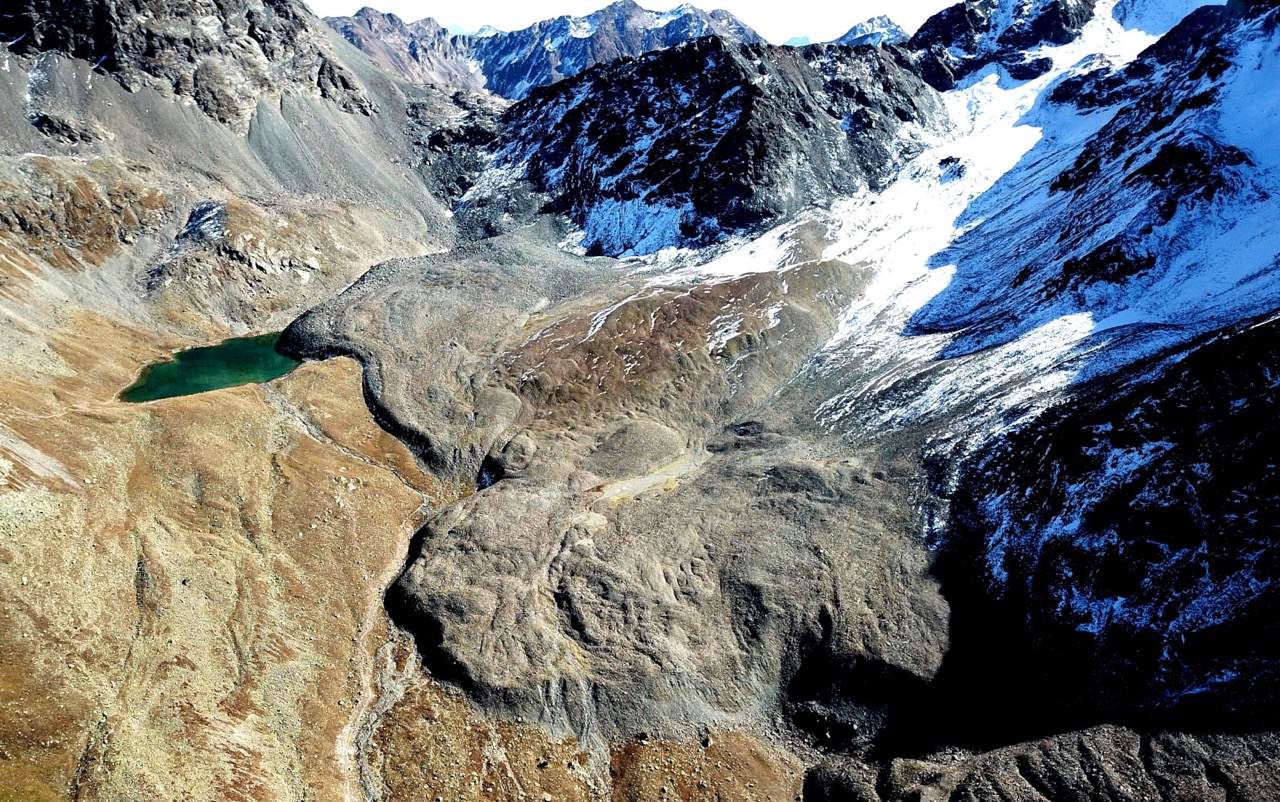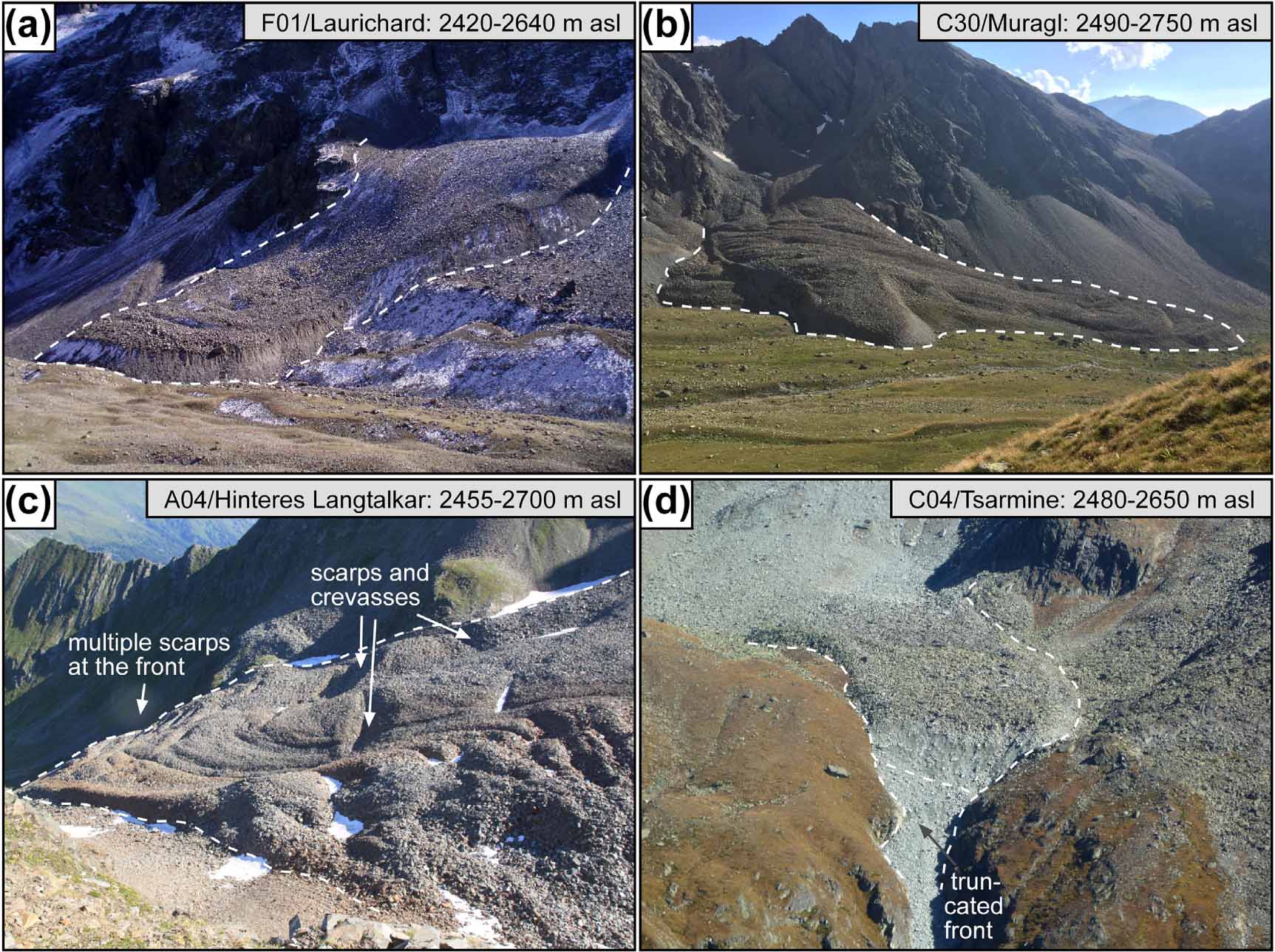Navigation auf uzh.ch
Navigation auf uzh.ch
Rock glaciers are a mixture of debris and ice that are permanently frozen on the inside all year round. They slowly creep downhill, and since the 1990s they have been creeping faster and faster. This makes them a reliable climate indicator, as a recent international study involving the GIUZ has shown.

Whether in Siberia, Alaska or the Alps – rising temperatures are affecting permafrost worldwide. In the high mountains, this can be seen in what are known as rock glaciers. These landforms, reminiscent of lava flows, are a mixture of debris and ice that are permanently frozen on the inside all year round. They slowly creep downhill, whereby the rate of movement is mainly related to the thermal regime of the permafrost body. Based on long-term observation data, an international study has now shown for the first time for the entire Alpine region that the velocity of rock glaciers, which has increased overall since the 1990s, is a reliable climate indicator. The research results were recently published in the scientific journal "Environmental Research Letters".
Actively creeping rock glaciers can be found in the Alps from an altitude of around 2300 metres above sea level. Their ice content must be high enough for them to move downhill. The study compares rock glacier velocities across the entire Alpine arc. And these have been increasing overall since the 1990s, even if there have been phases of slowdown in between.
Higher temperatures and more ground moisture accelerate the movement of the interesting debris-ice mixtures. When it gets colder, the speed decreases. “If the permafrost ice melts completely, the landform comes to a standstill and becomes a relic landform of the former permafrost expansion," explains Andreas Kellerer-Pirklbauer from the University of Graz, Austria, first author of the study.

For the study, 23 scientists used observation data from France, Italy, Austria and Switzerland from 1995 to 2022 and compared the rock glacier velocity values. “It turned out that the westernmost and easternmost of the more than 40 rock glaciers we analysed accelerate and decelerate to a similar extent at the same time, even though they are more than 500 kilometres apart”, says Isabelle Gärtner-Roer from the Department of Geography. "This clearly shows that their velocity is controlled by the climate.” The study thus provides profound evidence that rock glacier velocity is a product of the Essential Climate Variable (ECV) Permafrost and critically contributes to the characterisation of Earth's climate. The ECVs were defined by the Global Climate Observing System (GCOS) to provide a picture of climate change on a global scale.
The study authors suggest including more rock glaciers in the long-term monitoring. This data could provide additional valuable information on the effects of the expected evolution of climate.
Andreas Kellerer-Pirklbauer, Xavier Bodin, Reynald Delaloye, Christophe Lambiel, Isabelle Gärtner-Roer et al. Acceleration and interannual variability of creep rates in mountain permafrost landforms (rock glacier velocities) in the European Alps in 1995–2022 Environ. Res. Lett. 19 (2024) DOI 10.1088/1748-9326/ad25a4
Press release of the University of Graz, 15.02.2024
Title image: Rock glaciers, like here in Val Muragl in the Engadin, are mixtures of debris and ice and typical landforms of Alpine permafrost that slowly creep downhill. Photo: Alessandro Cicoira